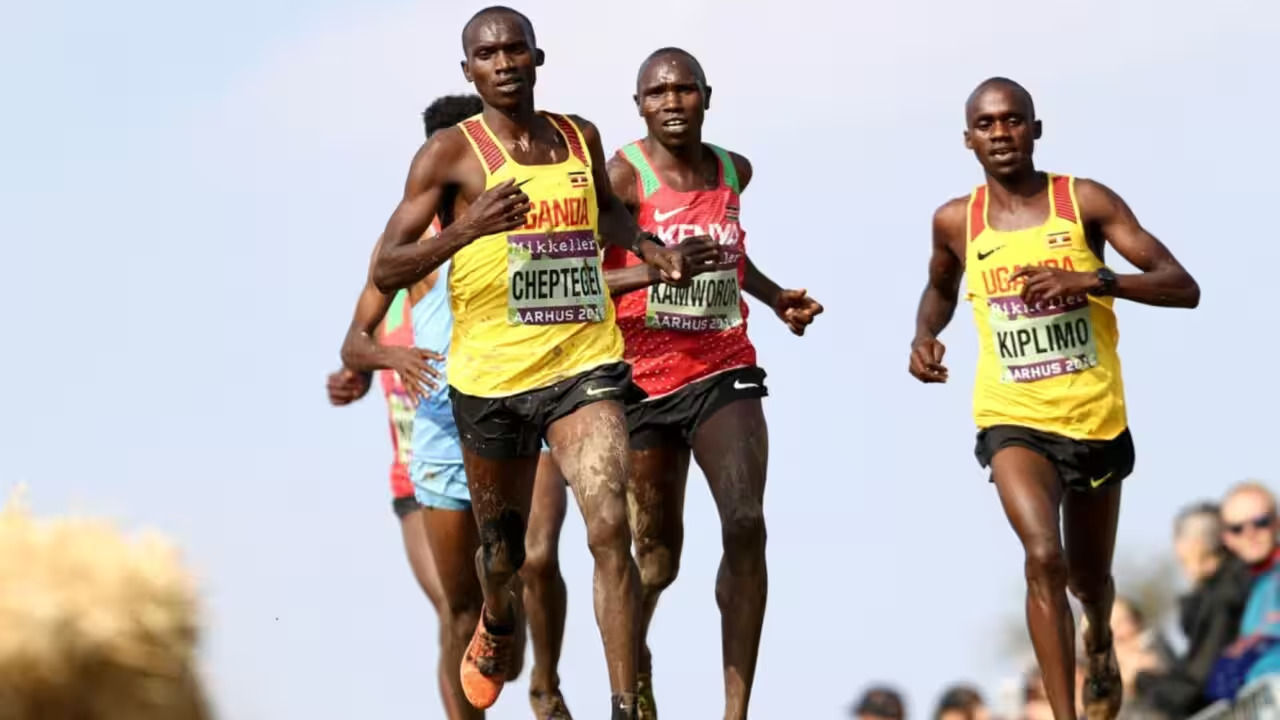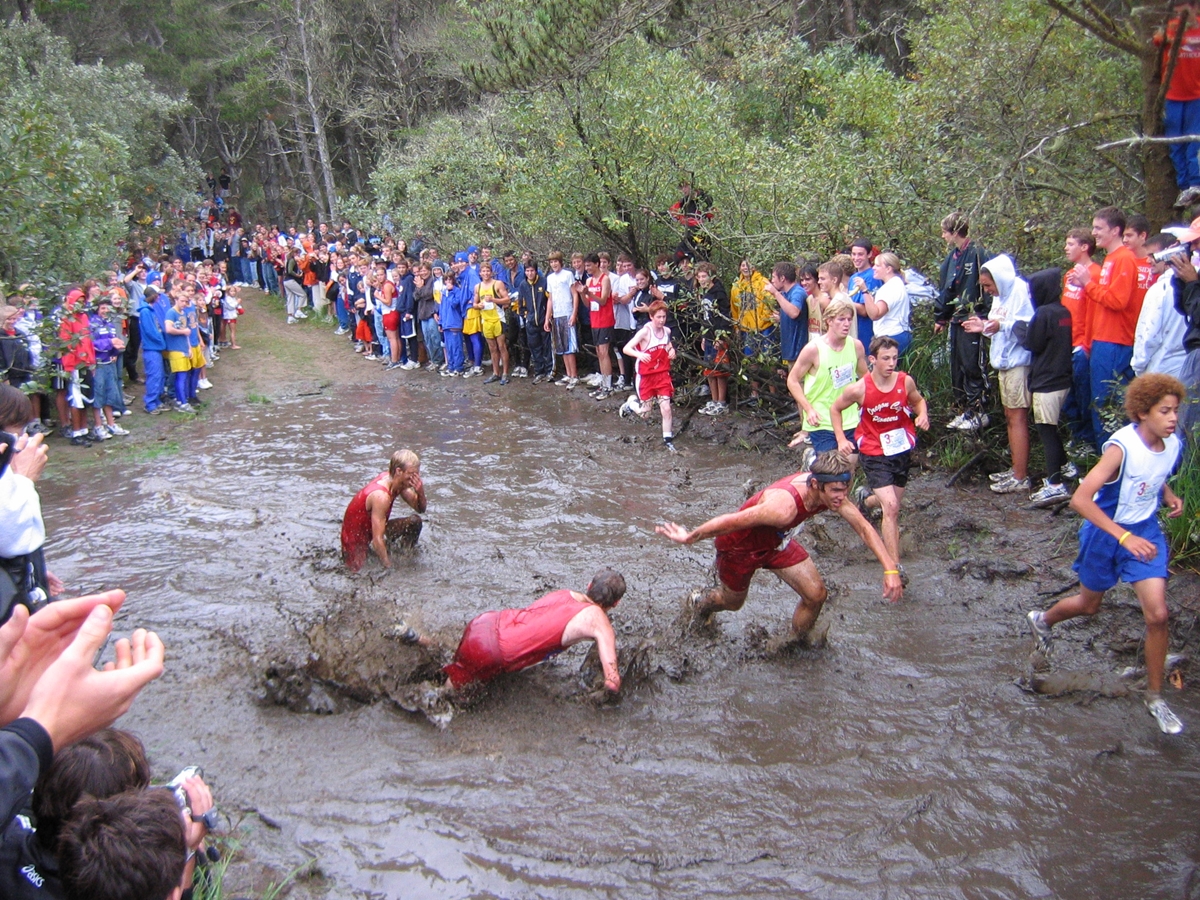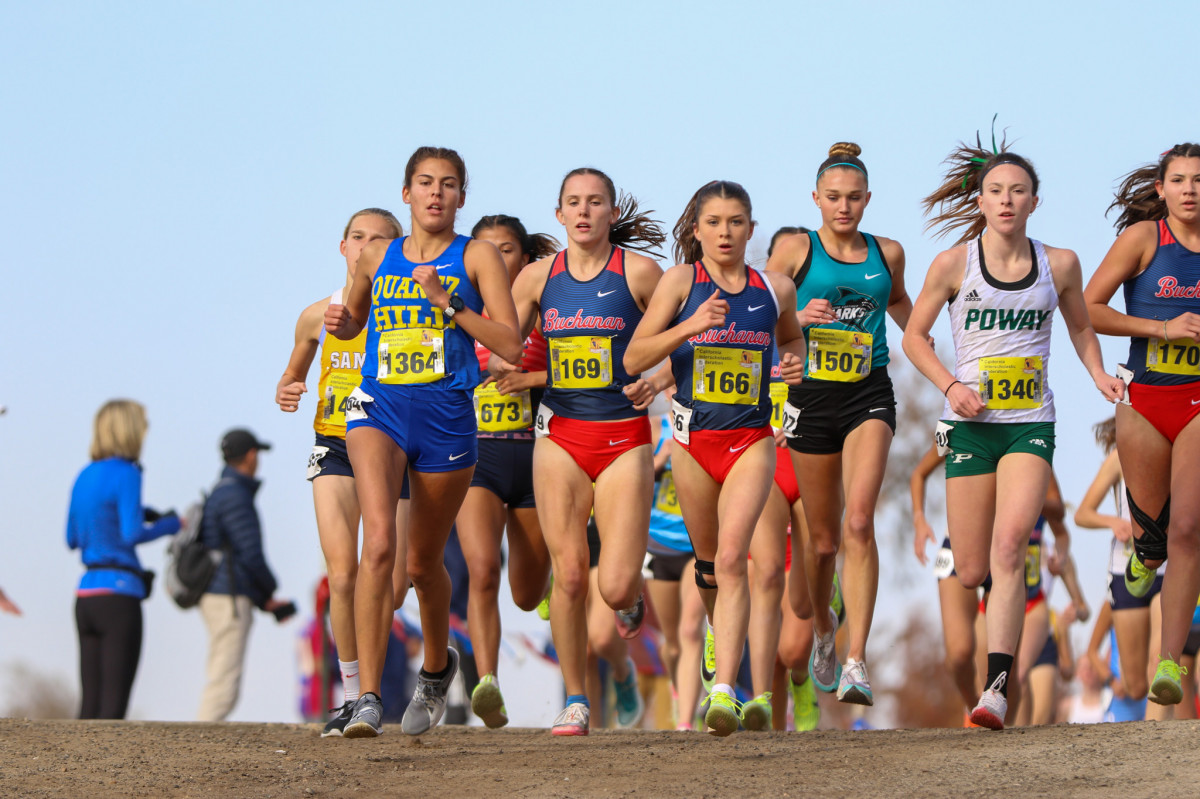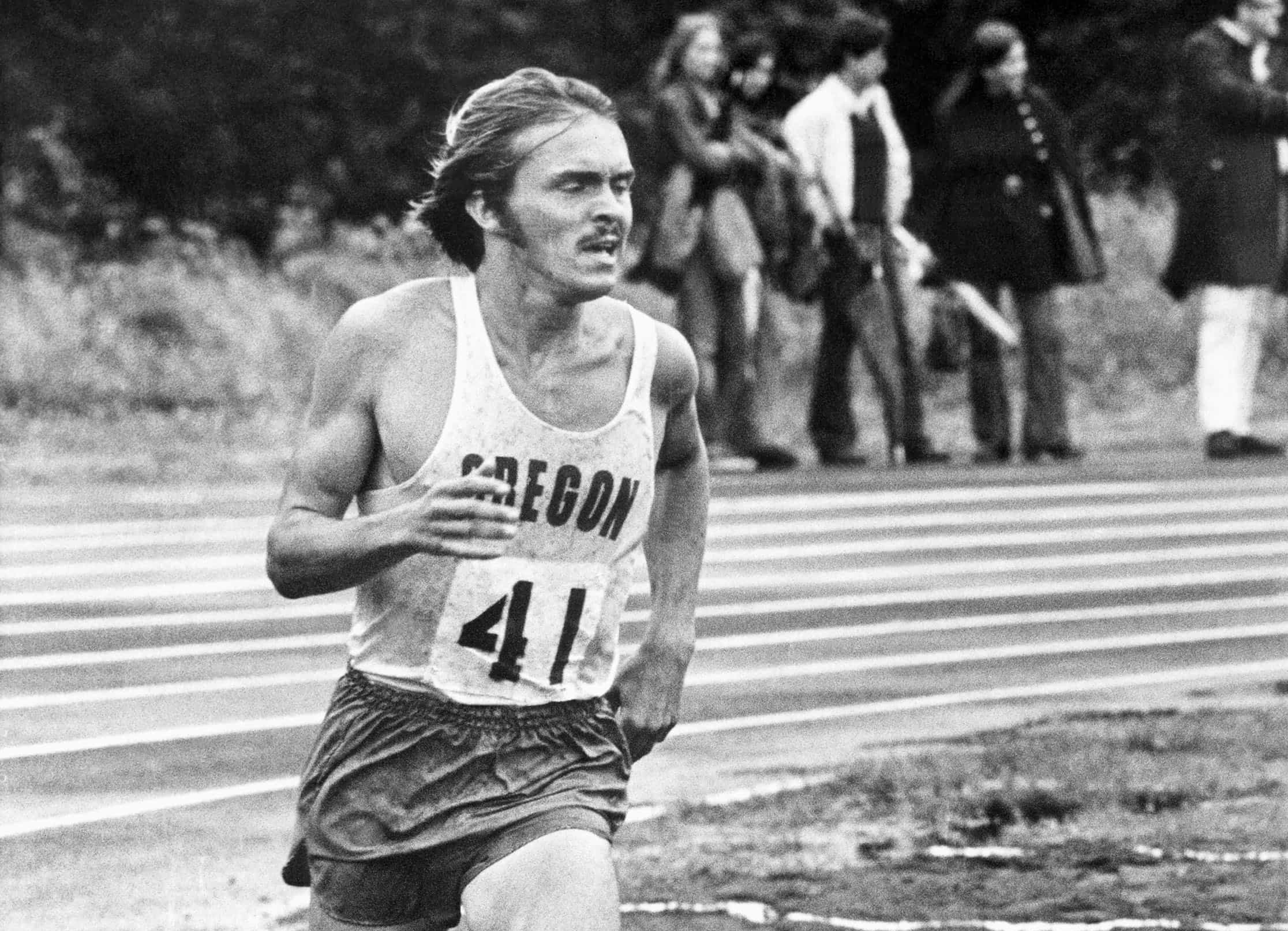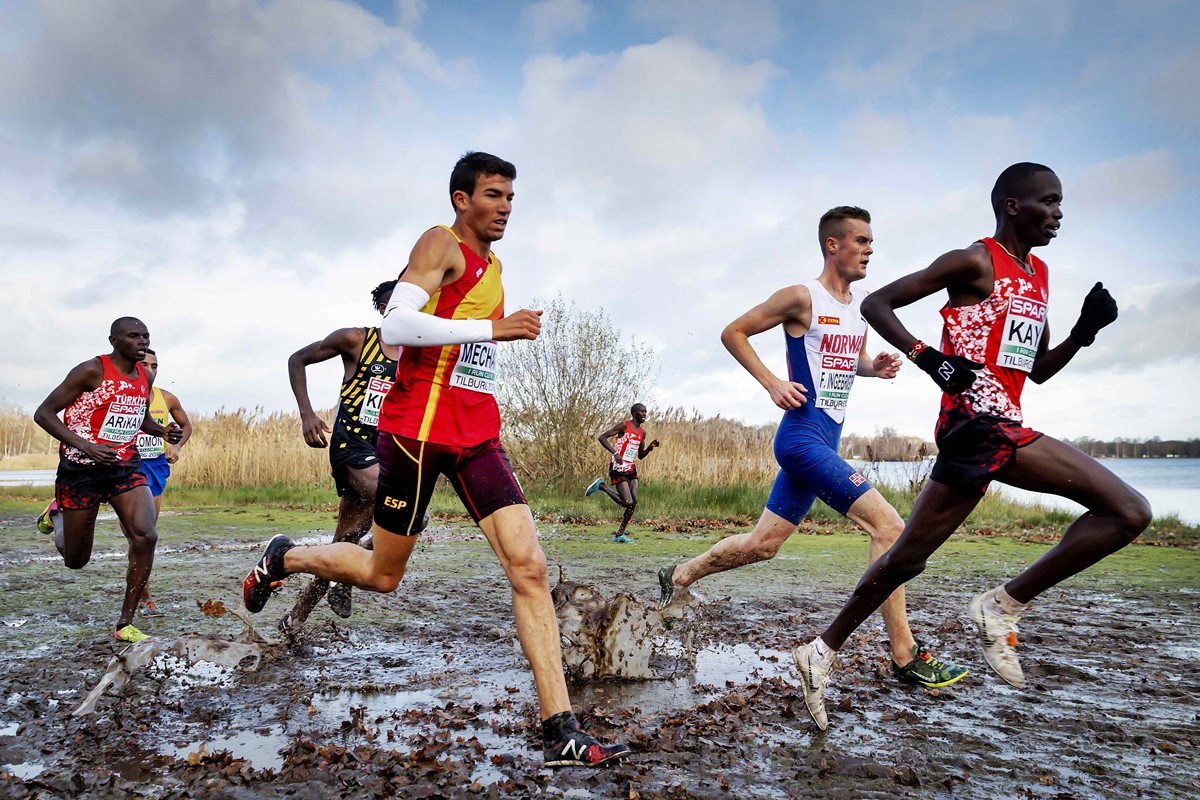

Featured
What Is Cross Country
Modified: August 21, 2023
"Discover the thrilling sport of cross country running. Our featured article provides everything you need to know about this challenging endurance activity."
Introduction
Cross country is a sport that requires endurance, strength, and mental fortitude. It is a form of long-distance running that takes place on various terrains, including grass, trails, and even steep hills. Unlike track and field events that take place on a controlled and flat surface, cross country runners face the challenge of unpredictable terrain and ever-changing weather conditions.
The roots of cross country can be traced back to the early 19th century in England, where it was initially developed as a means of training for military troops. Over time, it evolved into a competitive sport. Today, cross country is enjoyed by athletes of all ages and is a popular event in schools, colleges, and formal competitions worldwide.
Running cross country requires more than just physical strength. It demands mental toughness and the ability to push through fatigue and discomfort. As runners navigate through various surfaces and terrains, they draw upon their endurance, pacing, and decision-making abilities.
Furthermore, cross country is not just about individual performance; it is also a team sport. Teams compete against each other, with the score being determined by the finishing positions of their top runners. This aspect of cross country fosters camaraderie and teamwork among athletes.
Unlike other sports that may require specialized equipment, cross country relies on minimal gear. Runners typically wear lightweight, breathable clothing and supportive running shoes. Additionally, some runners may choose to use spikes for enhanced traction on certain surfaces.
In this article, we will explore the history of cross country, the rules and equipment involved, the training methods used by athletes, the benefits of participating in cross country, various techniques and strategies, notable cross country runners, and the differences between cross country and track and field.
So, whether you are new to the sport or a seasoned runner, this article will provide you with valuable insights and information about the exciting world of cross country.
History of Cross Country
The history of cross country can be traced back to the early 19th century in England. It was originally developed as a means of training for military troops. Soldiers were required to run across countryside terrain to build endurance and prepare for battles.
As the sport gained popularity, it began to be organized into formal competitions. The first recorded cross country race took place in the United States in 1878, where a group of English immigrants organized a competition in New York’s Van Cortlandt Park. This race laid the foundation for the growth of cross country as a sport in the US.
In 1903, the International Cross Country Union was established, marking the official recognition of cross country as an international sport. The first International Cross Country Championships were held in 1903 in Switzerland, and the event continues to this day under the name “World Cross Country Championships.”
Over the years, cross country has evolved in terms of distances and courses. Initially, races were typically held over distances between 10 and 12 kilometers for men and slightly shorter for women. However, variations in course lengths became common, ranging from 5 to 10 kilometers, depending on the competition and age category.
Throughout its history, cross country has become a prominent sport in schools, colleges, and universities. It is often seen as a fall season sport and is a popular choice for athletes looking to maintain fitness between track and field seasons.
In recent years, cross country has gained recognition as an Olympic event. Since the 1912 Olympic Games, cross country has been included as an official event. However, due to changes in the Olympic program, it was last contested in the 1924 Summer Olympics. Despite this, cross country remains an integral part of the athletic world.
The sport continues to grow in popularity globally, with thousands of cross country races held each year. From grassroots competitions to elite international events, cross country showcases the determination and endurance of athletes who tackle challenging terrain while striving for victory.
With its rich history and longstanding traditions, cross country has become both a respected sport and a symbol of athletic excellence.
Rules and Equipment
Cross country, as a sport, has relatively simple rules and requires minimal equipment. Here are the key rules and equipment involved:
Course Layout: Cross country races take place on a variety of terrain, including grass, trails, and even hills. The course is typically marked with flags or cones to guide runners along the designated path. It may also include natural obstacles such as streams or steep inclines.
Distance: The length of cross country races can vary depending on the competition and age category. In high school and college competitions, the distance for men is often 8 kilometers, while women race over 5 kilometers. However, there can be variations in distance, ranging from shorter races for younger athletes to longer races for more experienced runners.
Scoring: Cross country races are scored based on the finishing positions of individual runners and their teams. In team competitions, the top finishing positions of a predetermined number of runners from each team are added together. The team with the lowest combined score wins. Individual runners are also ranked based on their finishing times.
Equipment: The equipment required for cross country is minimal but important. The most crucial piece of equipment is the running shoes. These shoes should provide proper support, cushioning, and grip for the various terrains encountered while running. Many cross country runners opt for lightweight and flexible running shoes specifically designed for off-road running. Some runners may choose to use spikes to enhance traction on soft or muddy terrain. Spikes can be added to the soles of the shoes, which helps runners maintain grip and traction during the race.
Uniform: Runner’s clothing for cross country must also be considered. It is important to wear lightweight and breathable clothing that allows freedom of movement and helps regulate body temperature. Many athletes opt for moisture-wicking materials that help keep sweat away from the body, reducing the chances of discomfort and irritation during the race. Additionally, it is common for runners to wear singlets or jerseys representing their team or school.
Race Etiquette: Cross country races require a certain level of sportsmanship and respect for fellow runners. It is crucial to follow race rules, such as staying on the designated course and avoiding shortcuts. Runners should also refrain from obstructing or interfering with other competitors during the race. Respect for fellow runners and fair play are key components in maintaining the integrity of the sport.
By adhering to these rules and ensuring the proper equipment, cross country runners can enjoy a fair and competitive race while minimizing the risk of injuries or setbacks.
Training for Cross Country
Training for cross country requires a combination of endurance, speed, and strength. Athletes need to develop both their aerobic and anaerobic capacities to excel in this demanding sport. Here are some key aspects of cross country training:
Building Endurance: Endurance is crucial for cross country runners as races can be long and grueling. Long runs are an essential part of training, gradually increasing mileage to improve cardiovascular fitness. These runs help runners develop stamina and teach them how to pace themselves effectively during a race.
Interval Training: Cross country runners also incorporate interval training to improve their anaerobic capacity and speed. This involves alternating between high-intensity efforts and recovery periods. Intervals can range from short and intense sprints to longer tempo runs at a challenging pace.
Hill Training: Since cross country races often involve running on hilly terrain, incorporating hill training into the workout regimen is crucial. Hill repeats, where runners climb a hill at a challenging pace and recover on the way down, help build leg strength, power, and mental resilience.
Strength Training: Cross country runners can benefit from strength training exercises to improve overall performance and prevent injuries. Exercises such as squats, lunges, and core workouts help develop lower body strength and stability. Additionally, incorporating plyometric exercises like box jumps and lateral bounds can enhance agility and explosive power.
Flexibility and Mobility: Flexibility and mobility are essential for maintaining proper running form and reducing the risk of injury. Dynamic warm-up exercises and regular stretching routines help improve range of motion and keep muscles and joints supple. Foam rolling and mobility drills can also be included to address tightness and imbalances.
Recovery and Rest: Adequate rest and recovery are crucial components of a cross country training program. Runners need to listen to their bodies and allow for proper rest days to prevent overtraining and reduce the risk of injuries. Incorporating restorative activities such as light stretching, foam rolling, and low-impact cross-training, like swimming or cycling, can aid in recovery.
Mental Preparation: Cross country is not just a physical challenge; it also requires mental fortitude. Athletes should engage in mental preparation techniques such as visualization, positive self-talk, and goal setting. Developing mental toughness helps runners push through fatigue and stay focused during races.
It’s important for athletes to gradually increase the intensity and volume of their training sessions to avoid overexertion and injury. Consulting with a coach or a seasoned runner can provide guidance on structuring a well-rounded training program tailored to specific goals and fitness levels.
By following a comprehensive training plan that encompasses endurance, speed, strength, and mental preparation, cross country runners can enhance their performance and take on the challenges of the sport with confidence.
Benefits of Cross Country
Cross country offers numerous physical, mental, and social benefits. Whether you are a competitive athlete or simply enjoy running, participating in cross country can have a positive impact on your overall well-being. Here are some key benefits of cross country:
Cardiovascular Fitness: Cross country is a demanding endurance sport that significantly improves cardiovascular fitness. Regular training and participation in races help strengthen the heart and improve lung capacity, leading to enhanced overall cardiovascular health.
Full-Body Workout: Running in cross country engages multiple muscle groups throughout the body, providing a full-body workout. It strengthens the lower body, including the calves, quadriceps, and glutes. Additionally, the upper body and core are engaged for stability and coordination, leading to improved overall strength and muscle tone.
Weight Management: Cross country running is an effective way to burn calories and manage weight. The consistent moderate-to-high intensity running sessions help increase metabolism and facilitate fat loss, contributing to weight management goals.
Mental Well-being: Engaging in cross country can have a positive impact on mental health. Regular exercise and the release of endorphins during running help reduce stress levels, alleviate anxiety, and improve mood. The sense of accomplishment and self-confidence gained from completing challenging races can also boost overall mental well-being.
Increased Stamina and Endurance: Cross country running builds stamina and endurance, enabling individuals to perform better in various physical activities. The long-distance training and race experience teach runners how to manage their energy levels and push through physical and mental barriers, ultimately improving overall endurance.
Team Bonding and Social Connections: Cross country is not just an individual sport; it also fosters a sense of camaraderie and teamwork. Being part of a cross country team provides opportunities to bond with teammates, support and motivate each other, and develop strong friendships. The shared experiences, triumphs, and challenges create a sense of belonging and community.
Setting and Achieving Goals: Cross country allows individuals to set personal goals and work towards accomplishing them. Whether it’s improving race times, increasing mileage, or conquering challenging terrains, the sport provides a framework for setting and achieving targets. This fosters a sense of self-discipline, determination, and perseverance, which can translate into other areas of life.
Appreciation for Nature: Cross country running often takes place in scenic outdoor locations, allowing runners to appreciate nature and enjoy the beauty of their surroundings. The connection with the natural environment can be both calming and rejuvenating, enhancing the overall running experience.
These are just a few of the many benefits that cross country running offers. The combination of physical fitness, mental well-being, and social connections make cross country an enjoyable and rewarding sport for individuals of all ages and abilities.
Techniques and Strategies
Developing proper techniques and employing effective strategies are key to successful cross country running. Here are some important techniques and strategies that can help improve performance:
Proper Running Form: Maintaining good running form is crucial for optimal efficiency and injury prevention. Keep your body upright, shoulders relaxed, and arms swinging naturally. Stride length should be comfortable, neither too long nor too short. Aim for a midfoot strike to minimize the risk of overstriding and excessive impact.
Pacing: Cross country races vary in distance and terrain, requiring runners to gauge their effort and pace accordingly. Start conservatively and gradually increase your speed as the race progresses. Learning to pace yourself will help you avoid burning out early and allow you to finish strongly.
Terrain Adaptation: Cross country courses often present various types of terrain, including uphill climbs, downhill descents, and uneven surfaces. Practice running on different terrains to develop the necessary skills and adaptability. Learn techniques such as shortening strides on steep uphills and gaining speed while using controlled descents on downhills.
Course Familiarization: Before a race, take the time to familiarize yourself with the course. Study the course map, if available, and walk or jog parts of the course if possible. Understanding the layout and anticipating any challenging sections can give you a competitive edge during the race.
Efficient Breathing: Proper breathing technique is important for maintaining stamina and oxygenating your muscles. Practice rhythmic breathing and find a pattern that suits you, such as inhaling for two steps and exhaling for two steps. Experiment with different breathing techniques during training to see what works best for you.
Strategic Surges: To gain an advantage in a race, strategic surges can be employed. This involves increasing your speed for a short duration to overtake competitors or create separation. Timing these surges strategically, such as on challenging sections or towards the end of the race, can help you gain a psychological advantage over your opponents.
Mental Focus and Visualization: The mental aspect of cross country is vital to maintaining motivation and pushing through challenging moments. Visualize yourself running strong and with determination during training sessions and races. Practice positive self-talk and adopt mental strategies to stay focused and resilient, especially during the latter stages of a race.
Race Strategy: Having a race strategy is essential for maximizing performance. Identify your strengths and weaknesses and plan your approach accordingly. For example, if you excel at uphill climbs, plan to make your move during those sections. Analyze your competitors’ strengths and develop tactics to counter their strategies.
Hydration and Nutrition: Proper hydration and nutrition play a significant role in racing performance. Stay hydrated leading up to the race and during the event. Fuel your body with balanced meals that provide sufficient energy and nutrients for optimal performance. Experiment with different pre-race and mid-race nutrition strategies during training to find what works best for you.
By implementing these techniques and strategies into your training and racing approach, you can enhance your performance and achieve your goals in cross country running.
Famous Cross Country Runners
Cross country has produced many legendary athletes who have left a lasting impact on the sport. These individuals have showcased their exceptional talent, determination, and achievements on the cross country course. Here are a few famous cross country runners:
Haile Gebrselassie: Known as the “Emperor of Distance Running,” Gebrselassie is one of the greatest long-distance runners in history. The Ethiopian runner dominated both cross country and track events, winning numerous World Cross Country Championships and setting multiple world records on the track.
Lynn Jennings: Jennings is an American distance runner who achieved remarkable success in cross country. She won three individual World Cross Country Championships titles and was known for her fierce competitiveness and strong finishing kicks.
Mo Farah: Farah, a British long-distance runner of Somali heritage, has established himself as one of the most accomplished cross country runners of his generation. He won multiple gold medals in the World Cross Country Championships and went on to achieve great success in track events, including winning four Olympic gold medals at the 2012 and 2016 Olympics.
Sonia O’Sullivan: O’Sullivan is an Irish middle-distance and long-distance runner who achieved great success in cross country and track events. She captured multiple medals in the World Cross Country Championships and set world records in various distances on the track.
Kenenisa Bekele: Bekele, an Ethiopian runner, is considered one of the greatest distance runners in history. He dominated the cross country scene, winning multiple World Cross Country Championships and setting numerous records. Bekele also excelled on the track, setting world records in the 5,000m and 10,000m events.
Deena Kastor: Kastor is an American long-distance runner known for her successes in both road racing and cross country. She won multiple medals in the World Cross Country Championships and set numerous American records in distance running. Kastor’s notable achievements include winning the bronze medal in the marathon at the 2004 Olympics.
Paul Tergat: Tergat is a Kenyan runner who is widely regarded as one of the greatest cross country runners of all time. He won five individual World Cross Country Championships titles and set world records in various distances on the track. Tergat also had a remarkable career in road racing.
These are just a few examples of the many famous cross country runners who have made significant contributions to the sport. Their accomplishments serve as inspiration for aspiring runners and demonstrate the remarkable ability of individuals to excel in the challenging world of cross country.
Cross Country vs Track and Field
While both cross country and track and field involve running, there are significant differences between the two sports. Here’s a comparison of cross country and track and field:
Distance and Terrain: Cross country races are typically longer and take place on various terrains, such as grass, trails, or hills. Meanwhile, track and field events are held on a controlled and flat track, with distances ranging from short sprints (100m, 200m) to longer distances (800m, 1500m, 5000m).
Season and Weather: Cross country is predominantly a fall season sport, often taking place in cooler weather and sometimes challenging conditions like rain or mud. Track and field, on the other hand, is typically organized during the spring and summer seasons with more favorable weather conditions.
Team vs Individual: Cross country races have both team and individual components. Teams compete for a combined score based on the finishing positions of their top runners, while individuals are ranked based on their finishing times. Track and field, however, focuses more on individual performance, with athletes competing against others in their respective events.
Equipment: Cross country running requires minimal equipment, with runners needing suitable shoes for off-road running and potentially using spikes for added traction. In track and field events, athletes use specialized equipment such as starting blocks, hurdles, batons for relays, and specific shoes tailored to their respective events (e.g., sprint spikes, high jump shoes).
Events and Disciplines: Cross country is solely focused on distance running, with races ranging from 5 to 10 kilometers, depending on the level and category. Track and field encompasses various disciplines, including sprints, middle-distance races, long-distance races, hurdles, relays, jumps (such as long jump, high jump), throws (like shot put, javelin), and pole vaulting.
Training Approach: Trainings in cross country and track and field differ based on the specific demands of each sport. Cross country training often involves a mix of endurance-focused workouts and hill repetitions, with an emphasis on building strength and stamina. Track and field training focuses on specific event training, including speed work, technical drills, and event-specific conditioning.
Strategy and Tactics: Tactics in cross country primarily involve pacing and terrain management. Runners need to strategize when to conserve energy, when to surge, and how to navigate challenging terrain. In track and field events, tactics can vary depending on the event, such as positioning in races, clearing hurdles efficiently, or timing jumps or throws for maximum distance.
While both cross country and track and field share a common foundation of running, they offer distinct experiences for athletes. Cross country highlights endurance and adaptability on varied terrains, while track and field showcases speed, specialized technique, and a wide range of athletic disciplines. Whether an athlete’s preference lies in the ruggedness of cross country or the technical precision of track and field, both sports provide unique opportunities for growth, competition, and physical achievement.
Conclusion
Cross country is a challenging and rewarding sport that tests the physical and mental abilities of athletes. Its rich history, from its origins as a military training exercise to its prominence as a global sport, exemplifies the enduring appeal and universal nature of running. The sport’s minimal equipment requirements and diverse terrains make it accessible to individuals of all ages and fitness levels.
Through cross country, athletes develop endurance, strength, and resilience. They learn to adapt to various terrains, strategize race tactics, and work together as a team. The benefits of cross country extend beyond the physical realm, as participating in the sport promotes mental well-being, fosters a sense of community, and instills life skills such as goal-setting and self-discipline.
Moreover, cross country is complemented by its counterpart, track and field, which offers a diverse range of athletic disciplines and showcases specialized skills and techniques. Together, these sports provide athletes with opportunities for growth, personal achievement, and the pursuit of greatness.
Whether you are a dedicated cross country runner seeking to improve your performance or someone curious about the sport, the information provided in this article can serve as a valuable resource. By understanding the history, rules, training methods, and famous individuals who have excelled in cross country, you can gain a deeper appreciation for this challenging and captivating sport.
So, lace up your running shoes, embrace the beauty of nature, and experience the thrill of cross country running. Whether you’re racing against others or striving to beat your own personal records, cross country offers an exhilarating journey of self-discovery, athletic achievement, and endorphin-boosted joy.
